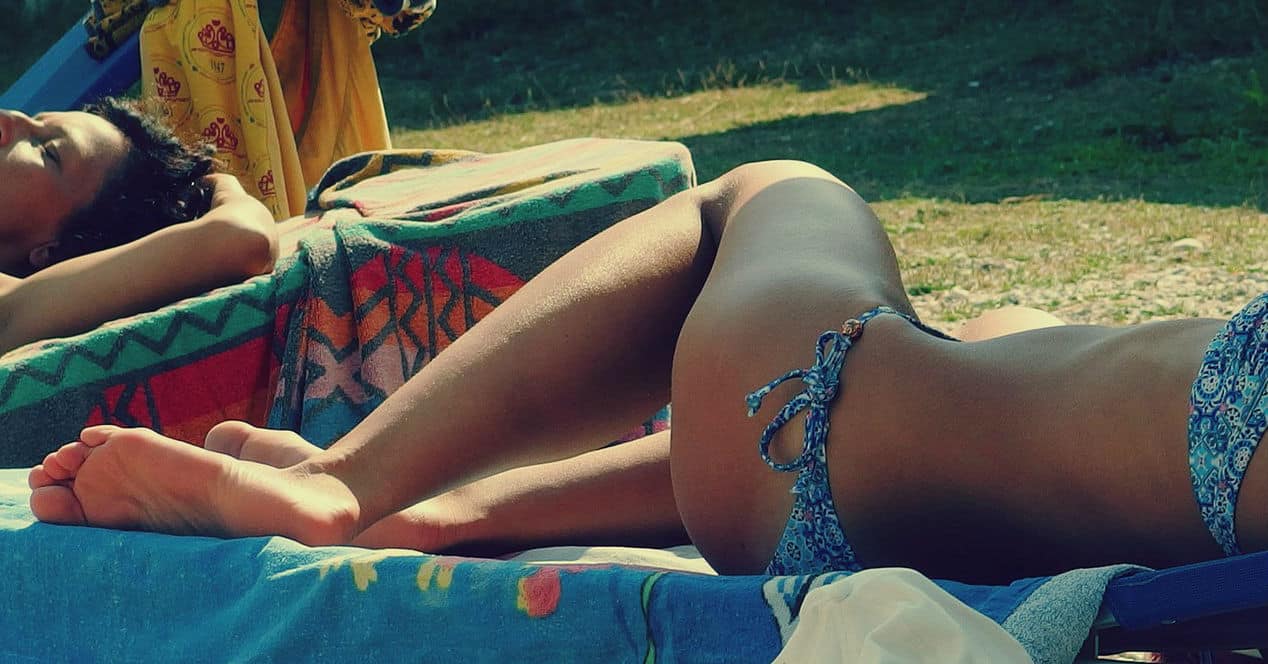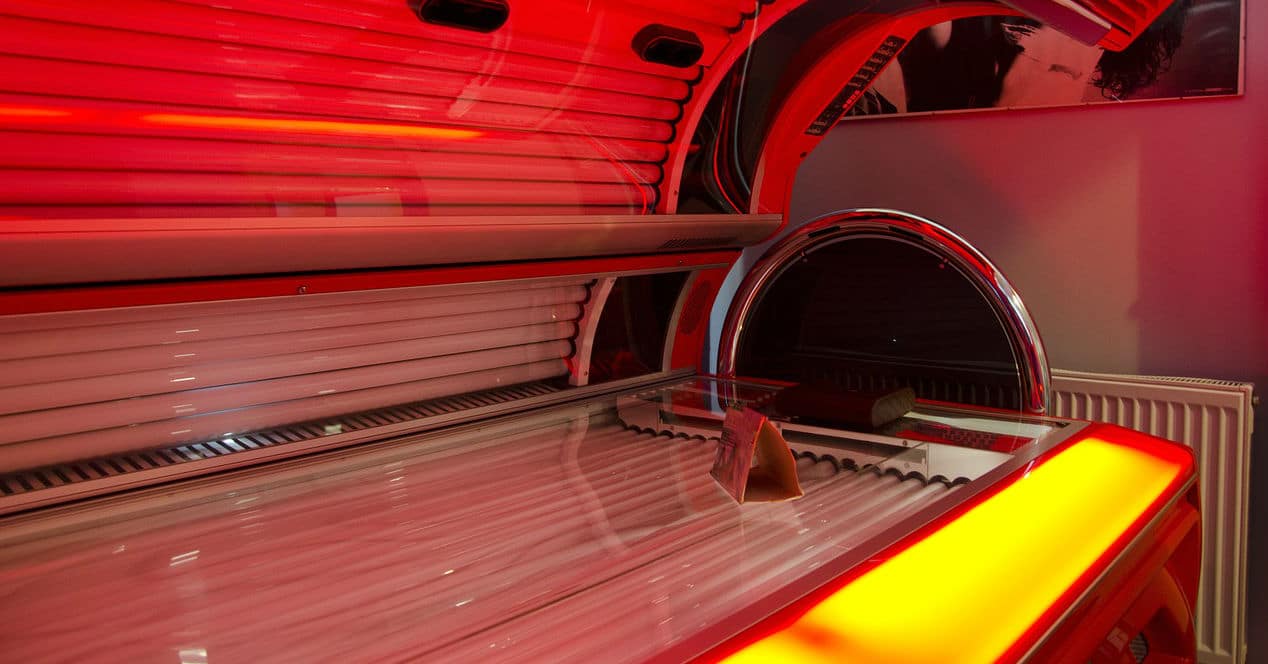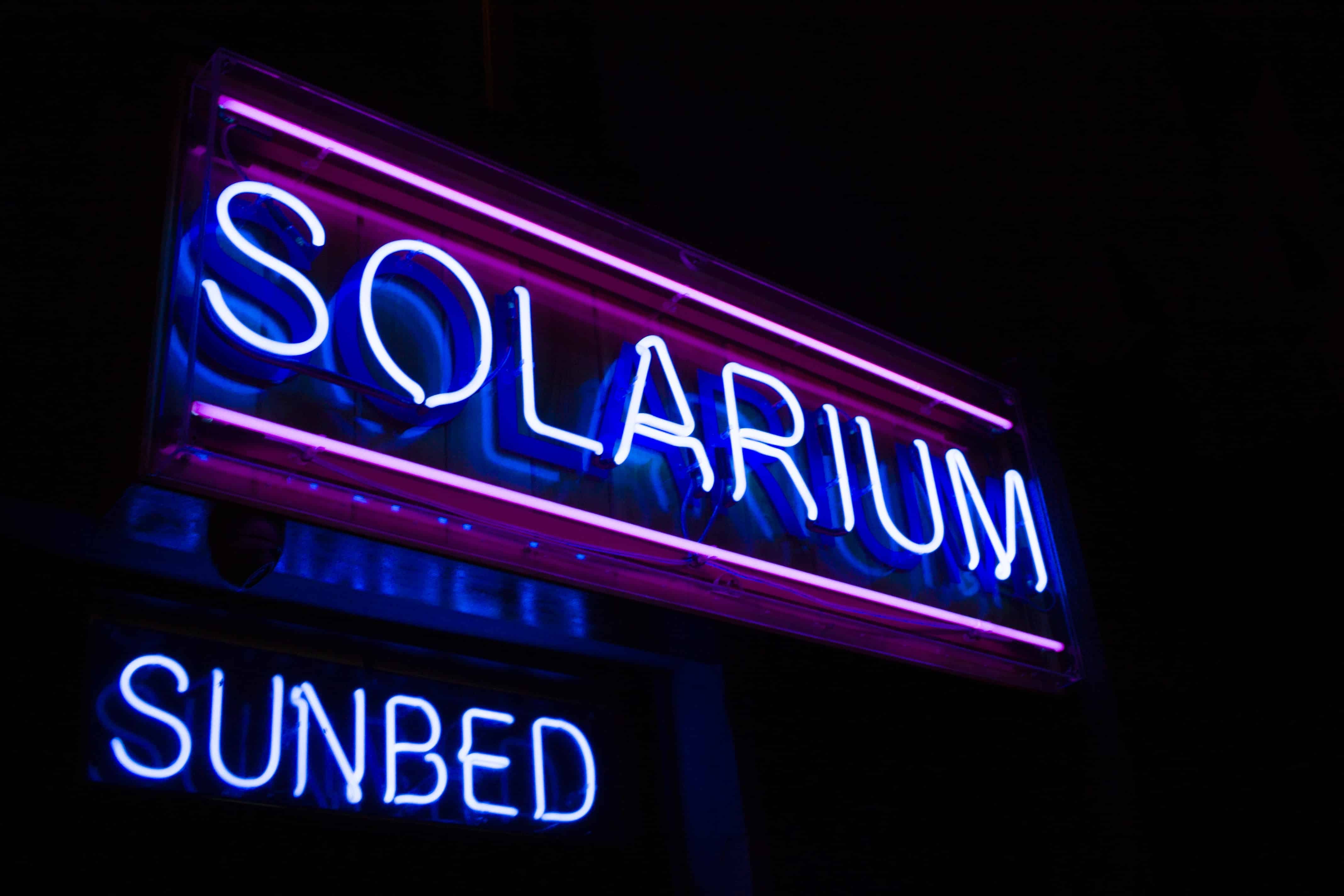
Bad weather, cold climates or the arrival of spring encourage many people to want to artificially tan. UVA ray cabins are irresistible for both young and old, men or women.
Few understand why our skin turns brown, but we assure you that using these machines is not the best way to do it.
How do they work?
Solariums or UVA ray cabins have powerful filters that block type B ultraviolet radiation (which is the one that most affects the skin) and only let type A radiation (which causes rapid tanning) pass. Although UVB rays are worse, UVA rays are not far behind. These negatively affect the elastic fibers of your skin, causing long-term aging and damage with the risk of cancer.
Solariums are light chambers used for indoor cosmetic tanning. They are also known as booths, sunlamps, and tanning lamps. The cameras are closed areas, with high intensity lights, in which a person can be standing or lying down for a period of time to induce a tanning effect similar to that produced by exposure to sunlight.
Like the sun's rays, the light rays emitted by the lights in solaria contain ultraviolet rays (UV) and therefore carry a risk of cancer and eye disease associated with UV radiation. However, the UV rays from solarium lights are more concentrated than the sun's rays, which means that the UV radiation emitted by solarium lamps is more intense than the radiation emitted by the sun.
In addition to higher overall intensity, the proportion of light rays emitted by solarium that are UV-B rays (versus UV-A and UV-C rays) is greater than the proportion of UV-B rays emitted by the sun . UV-B rays are the type of UV rays that pose the greatest risk to health and are responsible for most skin cancers.

Risks
Getting a tan in these types of booths can have numerous health hazards, both short- and long-term.
Increases the risk of skin cancer
Although it is not the only problem caused by the cabins, it is undoubtedly the one that worries the most. X-ray booths increase the risk of cancer, specifically of melanoma (most dangerous skin cancer).
Exposing yourself to the sun's rays in a moderate, controlled and precautionary manner is not dangerous. Yes, it is abusing that sun exposure, and using tanning booths is even more dangerous than sunbathing with protection.
According to a study by the International Center for Research on Cancer, which was published in The Lancet Oncology journal, if you start using this form of tanning before the age of 30, the risk of melanoma appearance increases by up to 75%, because radiation accumulates.
Appearance of spots and skin aging
As we said before, skin cancer is one of the many problems that arise with the use of UVA rays. These are responsible for accelerating the aging of our skin, increasing sun spots and the appearance of wrinkles. According to experts, people who undergo tanning booths tend to abuse sun exposure in the summer months.
Tanning causes premature aging, an acceleration of the skin's natural aging process. The symptoms are wrinkles, dark spots or age spots, loose skin, and a leathery texture. When skin is exposed to the sun's damaging UV rays from tanning booths, it becomes breaks down collagen in the skin. Collagen keeps the skin healthy and young looking by keeping it firm.
Fortunately, premature aging caused by UV rays is completely preventable. It is recommended to avoid tanning beds, lamps and booths. The more we tan and sunburn, the worse the premature aging will be.
eye damage
One risk of tanning booths is eye damage called photokeratitis, also known as snow blindness because many people experience it in snowy environments at high altitudes. It's a kind of sunburn on the eye. Other causes of photokeratitis are certain broken tanning lamps and mercury vapor lamps. The symptoms are tearing, blurred vision, decreased vision, a feeling of sand in the eye, swollen eyelids and pain. If you experience this, see your doctor for a topical solution that will help your eyes heal.
UV exposure can also cause cataracts, eye damage that leads to decreased vision, and blindness. Symptoms are pain in and around the eyes and blurry or spotty vision.

Are there benefits?
As you all know, quick tanning is what has made this practice famous. Some dermatologists allude to the fact that in patients with pathologies such as severe psoriasis, severe atopic skin or cutaneous lymphomas, they can have positive effects. Although this should be recommended by a doctor and never by yourself.
Ultraviolet light has been shown to have several benefits for certain skin conditions. Metered amounts of ultraviolet light in indoor tanning will help promote healing of acne, psoriasis, and eczema. UV light reduces excess oil production and maintains a healthy balance. Tanning also helps diminish the appearance of stretch marks.
People who have a slightly yellowish tinge to their complexion have jaundiced skin. It may be a sign of liver problems, in which case you should see your doctor, or a side effect of medications. Indoor tanning can improve the unhealthy appearance of jaundiced skin and help it look more revitalized and healthy.
Differences with natural tanning
Although many people expose themselves to solarium lights in the belief that they provide a safer method of tanning than sunbathing, there is currently no evidence to support the view that solarium tanning is safe. X-ray booths have been found to emit more intense levels of radiation UV-B than the sun, and exposure to UV-B radiation in particular is the leading cause of sun-related health risks.
Tanning beds use fluorescent bulbs that emit mostly UVA rays, with smaller doses of UVB. UVA radiation is up to three times more intense than UVA rays in natural sunlight, and even UVB rays can be close in intensity to bright sunlight.
Tanning salons make false claims like it can help create a base tan or it creates vitamin D in the body. However, the base layer is equivalent to SPF 4 and we can take a skin-friendly vitamin D supplement. Cancer is a scary thing in our world today, so people shouldn't be knowingly doing things that increase their risk of falling victim to it.